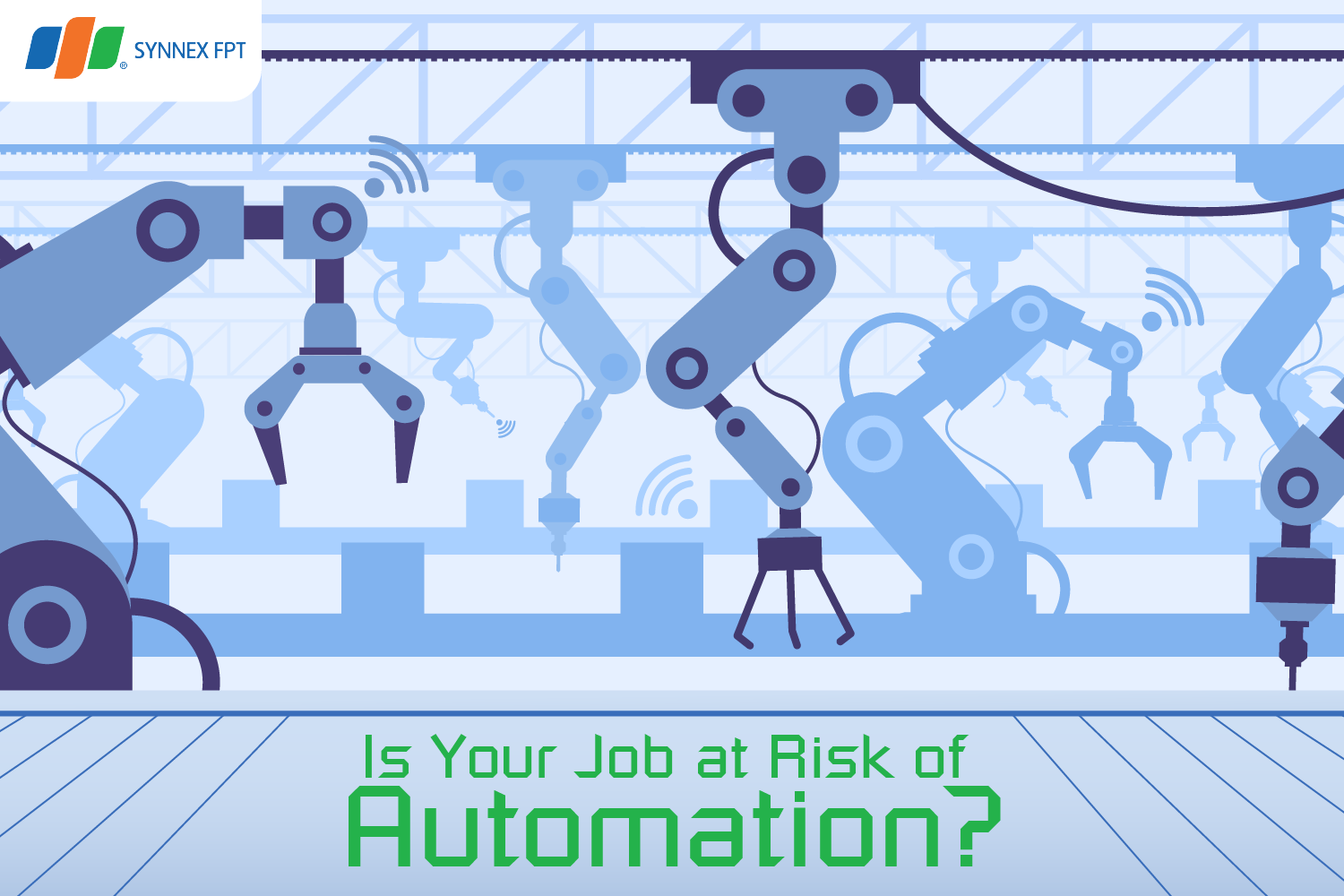Are you in danger of losing your job to automation? According to a study by the consulting firm McKinsey & Company, roughly one in three U.S. workers could cede some of their tasks or entire jobs to robots and other artificial intelligence by 2030.
Employers are expected to rely increasingly on computers to do jobs that humans currently perform. About half of all employees’ tasks could become automated using today’s technology. Because computers are generally less expensive, less prone to error, and more proficient in some areas than human employees, it’s clear that the future of work will increasingly involve robots.
While this might sound alarming, the study emphasizes that most human jobs will change rather than disappear completely. What does this mean for you and the future of your job? How can you prepare for the rise of robots in the workplace? Make sure you know what jobs and skills are likely to be taken over by automated workers and expand your skill set so you can perform tasks that robots cannot.
Which Jobs Will Robots Take Over?
Rest assured that many jobs will continue to exist even as tasks become more automated. McKinsey finds that less than 5% of jobs are likely to be entirely taken over by robotics and other computers.
Instead, computers will take over particular tasks that they can complete more efficiently or cost-effectively than humans. These include predictable or repetitive work, physical tasks, machine operation, and data processing and collecting. Artificial intelligence is transforming many industries and will have a significant impact on healthcare careers, for example.
People across all levels of education and at all stages in their careers will see some of their tasks taken over by computers. However, these changes will impact certain industries more than others. Some sectors that are most likely to experience a steep rise in automated workers include the following:
Construction
The good news is that construction jobs are growing due to today’s increased demand for new buildings, improved roadways, and other infrastructure development. However, some construction tasks are ideal for robots. These include any predictable physical labor, such as construction equipment operation, demolition, and basic installation and repair of materials.
Jobs and tasks that require more expertise, including complex installations and repairs, and construction site management, will likely not be replaced by robots any time soon.
Food Service
The food service industry is already seeing a rise in automation. This is particularly the case in fast-food restaurants, which typically focus on speed and efficiency. Computers can help customers place orders and make payments. They can also perform basic repetitive tasks in the back of the house, including dishwashing and even some food prep.
However, people will continue to fill food service jobs that involve creativity and skill (like chefs and cooks, particularly at fine dining restaurants) and human interaction (like waiters at restaurants that emphasize customer service). Management positions, too, will still require real people with strong supervisory skills.
Manufacturing
Robots have had a presence in manufacturing for decades, led by the auto industry. That presence is expanding rapidly as technology improves and costs of robotics drop. Many jobs in manufacturing (including assembler, fabricator, machinist, and more) involve completing repetitive, predictable tasks. Machines are already taking over at least some portions of these jobs, and that trend will likely continue.
Office Administration
People who work in administrative and office support perform many duties that could be taken over by computers—and in some cases, they already have been. Tasks such as booking appointments, answering straightforward phone calls, entering data, and generating reports are the types of predictable jobs computers can do, or might soon be able to. Administrative jobs range from secretaries to paralegals to office managers, and many of them still involve human qualities that will probably be difficult to automate.
Retail
Many big-box retail chains have already automated some tasks. Automated checkout services have become increasingly common, but that’s only the beginning. Robots and other computers are beginning to be used for basic tasks like stocking shelves, checking inventory, and cleaning aisles. Of course, stores that emphasize customer service will still hire human salespeople to interact with clients.
Beyond these industries are many other jobs that are likely to be increasingly replaced by computers, including delivery services, bank tellers, insurance underwriters, and more.
Which Jobs Are Safe?
Certain tasks cannot yet be replicated particularly well by a computer. For example, computers cannot express empathy or interact with people in the way humans can. Therefore, jobs that involve caring for others (including nurses, psychologists, teachers, social workers, and more) are generally safe from automation.
Any position that requires directly managing other people will likely also avoid automation. That is because robots and computers don’t have the emotional intelligence and skills to supervise humans (at least for now). Jobs that involve creativity—writers, artists, graphic designers—are also less likely to become automated.
While many tasks that involve predictable work will become automated, this is not the case for work in unpredictable environments. For example, jobs that take place outdoors (such as gardening) or jobs working with unpredictable populations (like young children) will be harder to automate.
Any job that requires extensive education and/or expertise is also less likely to be taken over by robotics. Keep in mind, though, that certain tasks within each of these jobs could still be automated. The human touch of nurses and doctors will remain essential, for example, but computers may increasingly be used to read X-rays and diagnose patients.
How to Prepare for Automation
Don’t let this information scare you or cause you to drop everything and quit your job. There are plenty of steps you can take to ensure job security in an increasingly automated world.
- Pick up new skills: Take the time to develop skills that robots cannot perform. Develop your problem-solving ability, your management skills, your creativity, and your emotional intelligence. If you can highlight these skills, you will make yourself an invaluable member of any team (and an employee not easily replaced by a computer).
- Go back to school: Jobs that require more education are less likely to be replaced by robots, in part because it would take too much time and energy to teach all of that information to a computer. Going back to school to specialize in a particular topic related to your job is a great way to make yourself indispensable. Consider how to change careers without going back to school or find a short-term training program to expand your skillset.
- Practice adaptability: While you may not lose your job to a robot, you might see a change in your day-to-day duties. Make sure to convey to your employer that you are flexible, adaptable, and willing to change and take on new tasks. Also, prepare to eventually work alongside more computers and robots than you do now. Employers will be impressed if you can adapt to this changing workforce with ease and with an open mind.
- Join the robots: With the rise in automation will also come new job opportunities. For example, people will have to develop, build, troubleshoot, and oversee computers in the workplace. If you are interested in computers and robotics, consider a career in which you would work alongside them.
- Don’t worry: Keep in mind that the McKinsey report stated that most jobs will not be lost to robots—instead, many tasks might change. Therefore, do not panic. There is no need to leave your current job out of fear that one day you will be replaced by a machine. Instead, focus on doing your best work, practice being adaptable and open-minded, and continue developing your skills.









No comment